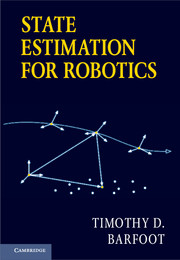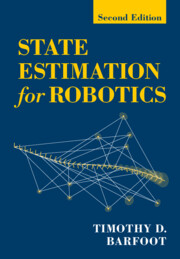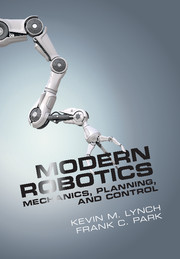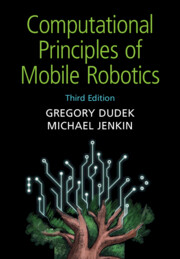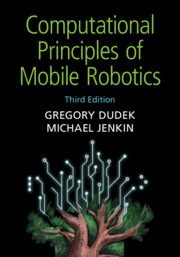State Estimation for Robotics
A key aspect of robotics today is estimating the state, such as position and orientation, of a robot as it moves through the world. Most robots and autonomous vehicles depend on noisy data from sensors such as cameras or laser rangefinders to navigate in a three-dimensional world. This book presents common sensor models and practical advice on how to carry out state estimation for rotations and other state variables. It covers both classical state estimation methods such as the Kalman filter, as well as important modern topics such as batch estimation, the Bayes filter, sigmapoint and particle filters, robust estimation for outlier rejection, and continuous-time trajectory estimation and its connection to Gaussian-process regression. The methods are demonstrated in the context of important applications such as point-cloud alignment, pose-graph relaxation, bundle adjustment, and simultaneous localization and mapping. Students and practitioners of robotics alike will find this a valuable resource.
- Covers both classical and modern state estimation techniques commonly used in robotics today
- Provides an accessible explanation of the mathematical nature of rotational (and pose) state variables
- Applies state estimation methods to practical robotics problems
Reviews & endorsements
‘This book provides a timely, concise, and well-scoped introduction to state estimation for robotics. It complements existing textbooks by giving a balanced presentation of estimation theoretic and geometric tools and discusses how these tools can be used to solve common estimation problems arising in robotics. It also strikes an excellent balance between theory and motivating examples.’ Luca Carlone, IEEE Control Systems Magazine
Product details
July 2017Adobe eBook Reader
9781108515672
0 pages
This ISBN is for an eBook version which is distributed on our behalf by a third party.
Table of Contents
- 1. Introduction
- Part I. Estimation Machinery:
- 2. Primer on probability theory
- 3. Linear-Gaussian estimation
- 4. Nonlinear non-Gaussian estimation
- 5. Biases, correspondences, and outliers
- Part II. Three-Dimensional Machinery:
- 6. Primer on three-dimensional geometry
- 7. Matrix lie groups
- Part III. Applications:
- 8. Pose estimation problems
- 9. Pose-and-point estimation problems
- 10. Continuous-time estimation.

